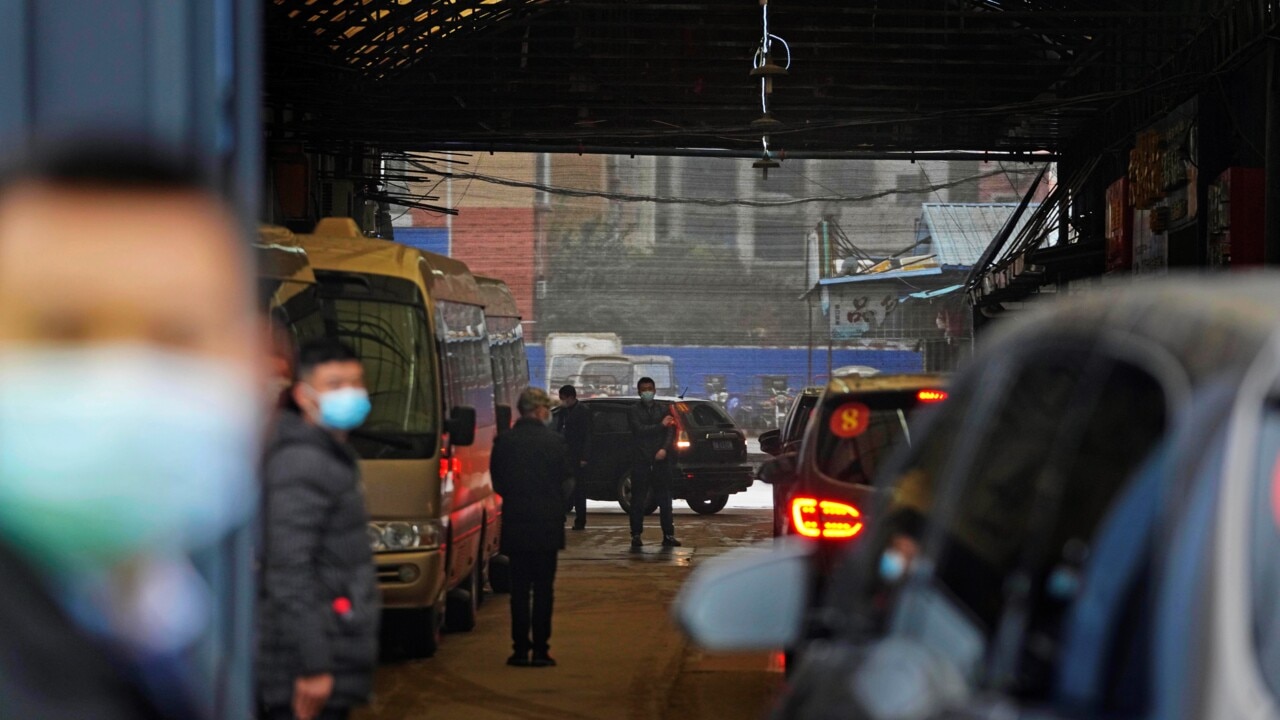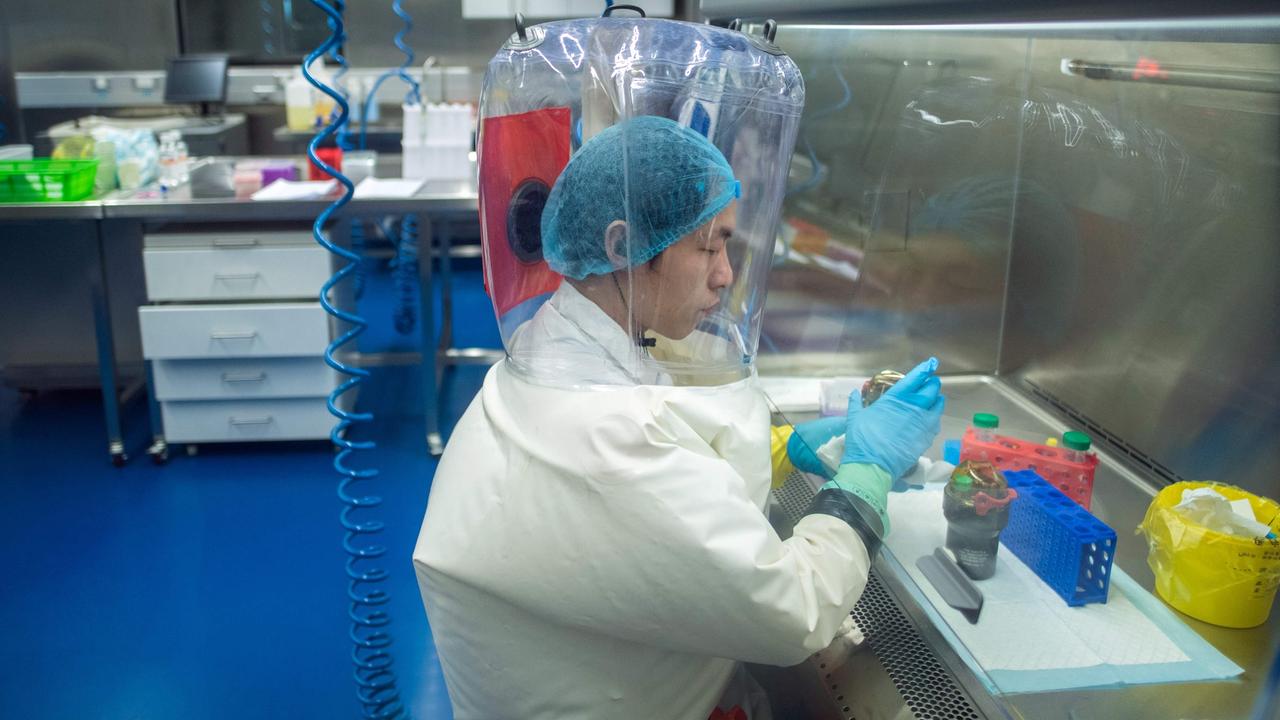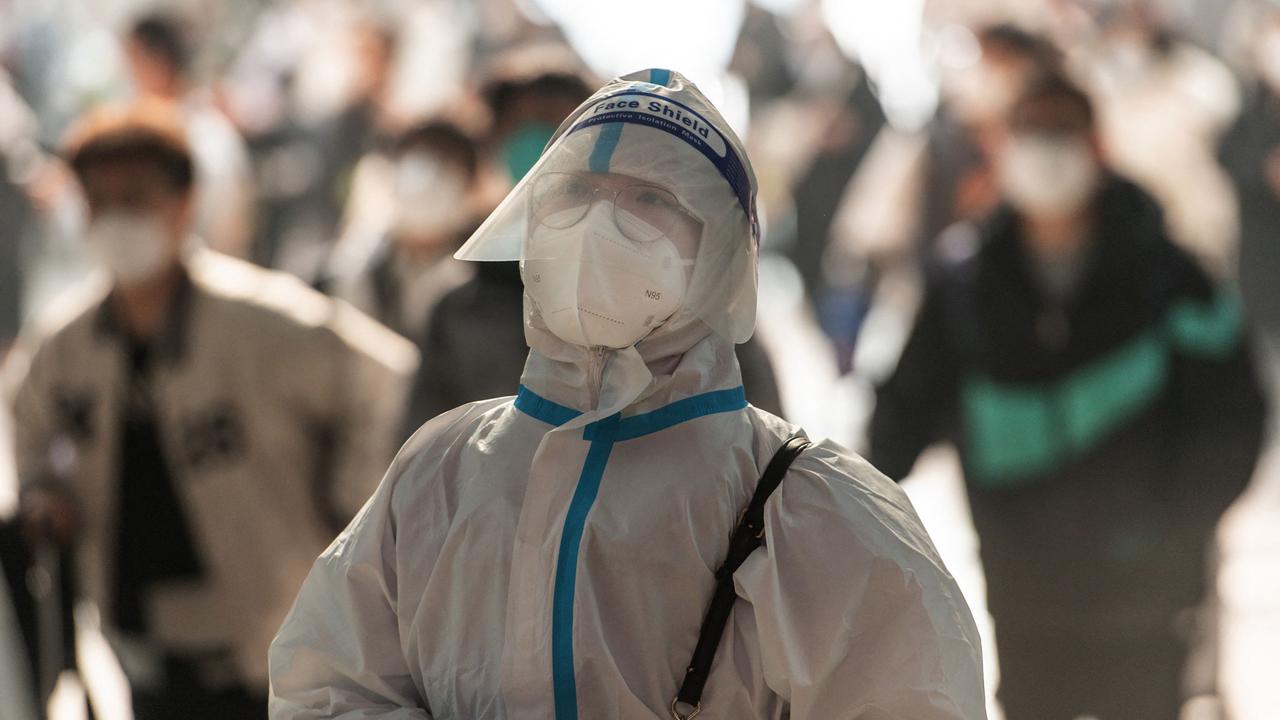COVID-19 outbreak in Wuhan much wider than previously thought, WHO finds
World Health Organisation investigators in Wuhan have made an alarming discovery that explains how COVID-19 managed to spread so fast.

The initial outbreak of coronavirus in Wuhan in December 2019 was much wider than previously thought, World Health Organisation (WHO) investigators have found.
The team, who have been looking into the origins of COVID-19 in the Chinese province, are now urgently seeking access to hundreds of thousands of blood samples from the city they have not yet been allowed to examine.
In a lengthy interview, the mission’s lead investigator, Peter Ben Embarek, told CNN that the team had found multiple signs of the wide-ranging spread of the virus in 2019 and established there were “over a dozen” strains in Wuhan already in December.
“The virus was circulating widely in December, which is a new finding,” Dr Embarek told the network.
He added that the team of scientists were presented with 174 cases of COVID-19 in and around Wuhan during December, with 100 confirmed by laboratory results and the remaining 74 through the clinical diagnosis of each patient’s symptoms.
The larger number of cases, Dr Embarek said, could mean the virus hit more than 1000 people in Wuhan within the month.
RELATED: Aussie rubbishes WHO's COVID inquiry


“We haven’t done any modelling of that since. But we know … in big ballpark figures … out of the infected population, about 15 per cent end up severe cases, and the vast majority are mild cases,” he said.
“Some” of the cases were from the markets – which includes the Huanan seafood market, which experts initially believed was ground zero for the virus – and some were not linked to markets, Dr Embarek said.
The discovery of the 13 virus strains could also signal it had been circulating long before the first case was picked up, as some virologists have previously suggested.
“As there was already genetic diversity in SARS-CoV-2 sequences sampled from Wuhan in December 2019, it is likely that the virus was circulating for a while longer than that month alone,” University of Sydney virologist, Professor Edward Holmes, told CNN.
“These data fit with other analyses that the virus emerged in the human population earlier than December 2019 and that there was a period of cryptic transmission before it was detected in the Huanan market.”
RELATED: Fury over ‘whitewash’ WHO investigation

Details about the mission have slowly emerged since Dr Embarek’s three-hour press conference last week, where he revealed experts’ conclusion that it is “extremely unlikely” the virus escaped from a lab or originated in bats, as initially thought.
Dr Embarek said that according to their research, an intermediary host species is “the most likely pathway (for crossover into humans) and one that will require more studies and more specific targeted research”.
The panel said it was likely other animals may serve as reservoirs, including those from the “feline family”, given the high susceptibility of minks and cats to the virus.
The team also found that “cold chain” transmission throu gh the transport of frozen goods was possible and warranted further investigation.
It’s a theory that China itself posited in retaliation to former US president Donald Trump’s baseless accusations early last year that the nation had leaked coronavirus from the Wuhan Institute of Virology.
“The market was dealing primarily with frozen animal products and mainly seafood but there were also vendors selling products from domesticated wildlife and imported products,” Dr Embarek said.
“We know the virus can survive in conditions that are found in these cold, frozen environments, but we don’t really understand if the virus can transmit to humans.”
RELATED: Expert’s grim prediction for the future
CHINA’S BEHAVIOUR ‘FRUSTRATED’ THE INQUIRY
The WHO’s possible validation of China’s frozen food theory has fuelled allegations of the organisation’s “China-centric” bias, with politicians in Australia, the UK and the US jumping to criticise the investigation after its conclusion.
Nationals Senator Matt Canavan told Today last week that China had acted like it had “something to hide”, adding he was not surprised that it was hard to find the virus’ origins a year after the pandemic began.
“We needed this inquiry to start pretty much straight away if there was any hope of finding conclusions and it hasn’t,” he said.
“Through this whole process, China’s acted like it had something to hide and it has frustrated the inquiry, dragged it out.”
Mr Canavan said that while the world would benefit from knowing where COVID-19 came from so it could be prevented, “we will probably never know because China has not been fully transparent with the world”.
RELATED: War of words between US and China over COVID

China has since pledged transparency with the investigation, with a Chinese Embassy spokesperson declaring to CNN the nation has “faithfully” supported the WHO, unlike America.
Despite the claim, Chinese authorities refused to provide WHO investigators with raw, personalised data on early COVID-19 cases that could help them determine when and how the virus first began to spread.
“They showed us a couple of examples, but that’s not the same as doing all of them, which is standard epidemiological investigation,” Australian microbiologist and WHO team member, Dominic Dwyer, told The Wall Street Journal.
“So then, you know, the interpretation of that data becomes more limited from our point of view, although the other side might see it as being quite good.”
Dr Embarek said the team hopes to examine thousands of biological samples from Wuhan’s blood donor bank that date back two years, saying it would be “fantastic” if they could work with them.
A number of other samples that might have proven useful “have been discarded after some months or weeks” and were therefore not available to investigators.




